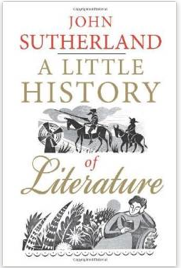 The John Updike Society has appreciated the involvement of Updike family members, with the first conference featuring a panel consisting of Mary, Updike’s first wife, and three of the four Updike siblings—Liz, Michael, and Miranda. And the second conference in Boston offered a special exhibit mounted by Michael, with Liz helping him to discuss the objects their father mentioned in his fiction and prose. For the upcoming Third Biennial John Updike Society Conference in Reading, David Updike will offer a plenary session.
The John Updike Society has appreciated the involvement of Updike family members, with the first conference featuring a panel consisting of Mary, Updike’s first wife, and three of the four Updike siblings—Liz, Michael, and Miranda. And the second conference in Boston offered a special exhibit mounted by Michael, with Liz helping him to discuss the objects their father mentioned in his fiction and prose. For the upcoming Third Biennial John Updike Society Conference in Reading, David Updike will offer a plenary session.
David, a writer whose most recent collection of short stories is titled Old Girlfriends, will speak on “Family Archaeology: pictures, objects, words.” He is currently the Updike Scholar in Residence at Alvernia University.
Members (and new members) can still register for the conference (3rd Conference registration form) and still submit an abstract for a paper presentation: Call for Papers extended.
The conference, hosted by Alvernia University, features additional plenary sessions by Don Greiner on the “Chatterbox and the Young JU,” Ward Briggs and Biljana Dojcinovic on the real romance that inspired Updike’s “The Bulgarian Poetess,” and a panel of Updike classmates interviewed by Jack De Bellis (John Updike’s Early Years).
The two keynote speakers should be equally memorable. Legendary graphic artist Chip Kidd, who designed many an Updike cover and worked closely with the author, will deliver the opening keynote speech on Thursday, October 2. And Adam Begley, whose biography of Updike has been widely acclaimed, will deliver the closing keynote speech at the Saturday evening banquet at the Abraham Lincoln Hotel, a historic building at which many famous people have stayed, and where composer John Philip Sousa famously died while on tour.
Speaking of tours, there are two planned: One is a walking tour of Updike’s Shillington and a picnic at The John Updike Childhood Home, where you can see how the restoration is coming along; the other is a local flavor bus tour that will drive past historic covered bridges and hex barns, tour a small local pretzel factory, and stop at such Updike sites as Plow Cemetery and the Pagoda. If you went on the bus tour for the first conference, you’ll still want to come along, because there are new things mixed in with the old.
New members and first-time attendees are most welcome! And members who attended one of the first conferences know that these start to feel like reunions, where you can gather with like-minded friends. You’ll have plenty of opportunities for that, including a welcoming reception hosted by Alvernia University, and a tour of the Reading Public Museum and reception hosted by Albright College.
 John Updike has made another list, but this time it’s a worst, rather than a best list.
John Updike has made another list, but this time it’s a worst, rather than a best list.



